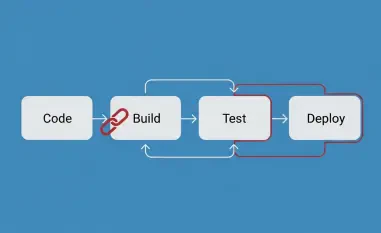Australia is significantly increasing its defense budget, highlighting a strategic commitment to enhancing national security capabilities. This rise in spending, particularly under the current government, is influenced by both regional tensions and pressures from international allies. As contemporary security challenges evolve, there is an urgent need for Australia to align its defense investments with the requirements of modern and future warfare to maintain its strategic advantage and safeguard national interests.
Increased Defense Expenditures and Strategic Commitment
Australia has committed to substantial allocations of its GDP towards defense, reflecting a heightened focus on national security. The recent decision by the Albanese government to advance an additional A$1 billion underscores this commitment. This increase is largely influenced by pressures from key allies, notably the United States, urging Australia to enhance its military readiness amid escalating regional and global threats. As traditional alliances become more pivotal, Australia faces growing pressure to contribute more significantly to collective defense and security efforts.
This significant boost in defense spending aims to bolster Australia’s military capabilities in anticipation of emerging threats and regional uncertainties. By advancing its budget, the government is ensuring that defense forces are not only well-equipped but also technologically advanced to respond effectively to a myriad of potential conflicts. The intention is to create a deterrent that signals Australia’s preparedness to counter threats decisively. As geopolitical dynamics evolve, the country must show a robust defense posture, underpinned by sufficient funding and resource allocation, to remain resilient against potential adversaries.
Evolution of Warfare and Emerging Threats
Traditional warfare paradigms are giving way to future conflicts defined by cyber, space, and information warfare. These emerging domains present new challenges and necessitate a strategic pivot in military capabilities. Australia’s defense strategies must adapt to these evolving forms of threats, emphasizing the need to break away from a sole focus on conventional military assets like submarines and missile systems. Instead, the nation must invest in advanced technologies that address the complexities of modern warfare.
As cyber threats escalate and space becomes a new frontier for defense operations, the Australian Defense Force (ADF) must build capabilities that ensure security in these domains. Cybersecurity is essential to protect critical infrastructure and prevent cyberattacks that could cripple national security. The importance of space defense cannot be understated, as satellite technology and space-based assets play a crucial role in communication, surveillance, and navigation. Investing in these areas will position Australia to effectively counter attempts at adversarial influence and maintain technological superiority in a rapidly changing security environment.
Challenges in Procurement Efficiency
Despite increased spending, Australia’s defense procurement processes face significant hurdles. Historical inefficiencies highlight the persistent misalignment between strategic goals and actual investments, posing risks to timely and effective capability development. High-profile project delays, such as the Collins-class submarines and the scrapped MRH90 helicopter program, exemplify the need for a more streamlined and responsive procurement system. These challenges underscore a systemic problem where bureaucratic red tape and outdated practices hinder the ability to rapidly adopt new technologies and capabilities.
Addressing these procurement inefficiencies is crucial for ensuring that increased budgets translate into concrete and timely enhancements in defense readiness. By overhauling the procurement process, adopting best practices from other sectors, and implementing more agile contracting methods, Australia can improve the efficiency and effectiveness of its defense acquisitions. This modernization of the procurement system will help the ADF access cutting-edge technology and assets essential for maintaining operational superiority in a fast-evolving global security landscape.
Necessity for Strategic Transition
To remain competitive, Australia must transition from preparing for conventional conflicts to anticipating future warfare requirements. This shift demands prioritizing technological advancements such as cyber defense, artificial intelligence, and space capabilities. The focus should be on building resilience against non-traditional threats, including cyberattacks, misinformation campaigns, and economic coercion, which characterize modern gray zone operations.
Investing in these advanced technologies will enable Australia to stay ahead of adversaries who are increasingly employing unconventional methods to achieve strategic objectives. The integration of AI into defense operations can enhance decision-making, optimize resource allocation, and automate complex tasks, thereby increasing operational efficiency. Similarly, robust cyber defense measures are vital to guard against disruptions to critical infrastructure and ensure the integrity of strategic communications. Emphasizing space capabilities ensures that Australia can protect its assets in orbit and maintain a significant advantage in surveillance and reconnaissance.
Recommendations for Defense Realignment
Implementing agile procurement strategies and improved forecasting can enhance the defense force’s ability to integrate emerging technologies. Horizon scanning and systemic design will support proactive capability development. Investing in cyber and AI technologies will be crucial for national security. These capabilities will enable effective responses to evolving threats and sustain operational advantages in modern conflict scenarios. A forward-looking approach that anticipates technological trends and adapts swiftly to new developments is essential.
To ensure effective defense realignment, the government must foster a culture of innovation within defense institutions and encourage collaboration with industry leaders in technology and academia. This will facilitate the translation of cutting-edge research and development into practical military applications. Moreover, agile procurement practices will circumvent bureaucratic delays, allowing for the faster implementation of critical capabilities. As these new technologies are integrated into the defense framework, ongoing assessment and adaptation will be necessary to keep pace with the rapid evolution of modern warfare.
Collaborating with Academia and Industry
Fostering partnerships with universities and private sector technology companies is essential for accelerating innovation in defense technologies. Supporting research in cybersecurity, AI, and space defense will bolster long-term strategic resilience. Collaboration with academia and industry can drive technological advancements and provide the defense sector with access to specialized expertise and resources. These partnerships are instrumental in developing cutting-edge solutions that address the sophisticated nature of current and future threats.
Such collaborative efforts must be strategically aligned to ensure that research and development initiatives effectively meet defense objectives. Joint programs and funding opportunities can spur innovation and facilitate the application of breakthrough technologies in real-world defense scenarios. Engaging with the private sector, particularly emerging technology companies, can also provide the defense establishment with fresh perspectives and novel approaches to addressing security challenges. By leveraging these partnerships, Australia can create a dynamic and adaptable defense ecosystem poised to face the uncertain future.
Aligning Investments with Strategic Goals
Australia is making a significant move to ramp up its defense budget, signaling a strong commitment to bolstering national security and military capabilities. This increase in spending, especially under the present government, is driven by rising regional tensions and pressures from international allies who expect Australia to play a crucial role in global security. Modern security challenges are evolving rapidly, with cyber threats, terrorism, and geopolitical shifts becoming more complex and unpredictable. These developments necessitate that Australia not only improve its traditional military assets but also invest in cutting-edge technology and modern warfare strategies. By aligning its defense investments with the demands of contemporary and future conflicts, Australia aims to maintain its strategic edge and ensure the protection of its national interests. This proactive approach underscores the importance of being prepared to address multifaceted security scenarios, ranging from regional disputes to global power dynamics, thereby strengthening Australia’s position on the international stage and safeguarding its sovereignty.













